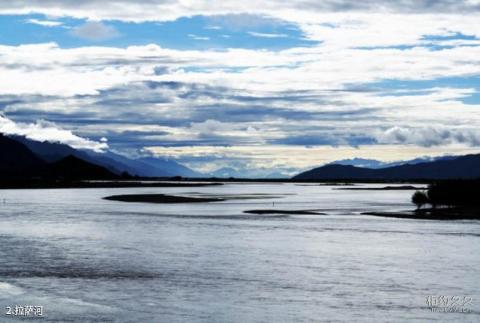
Introduction to the Lhasa River: The total drop of the Lhasa River is 1,620 meters, with an average slope drop of 2.9‰. The upstream section from the source of the river to the entrance of Sangquhui is 256 kilometers long, with a drop of 960 meters and an average gradient of 3.8‰. The river meanders in the hilly and wide valley basin; the middle section from the entrance of Sangquhui to Zhikong is 138 meters long. km, with a drop of 360 meters, and an average slope drop of 2.6‰. The width of the valley gradually widens from more than 700 meters to 1 to 2 kilometers, and terraces develop on both sides of the valley. The downstream section from the straight hole is 157 kilometers long, with a drop of about 300 meters, with an average The slope is 1.9‰ and the water flow is gentle. In the downstream section above Mozhu Gongka, the river is relatively straight, the river bed is relatively stable, and the valley bottom is 1 to 3 kilometers wide; below Mozhu Gongka, the river is winding and has many branches. The width of the valley bottom is generally 3 to 5 kilometers, and it can reach 7.8 kilometers near Lhasa. Typical wide valley river section. Cowhide boats can travel from Lhasa to Zedang. The Lhasa River basin only accounts for 2.7% of the total area of the Tibet Autonomous Region, but the population and cultivated land in the basin account for about 15% of the entire autonomous region. It is an area where industry, agriculture, and animal husbandry are concentrated in Tibet.
